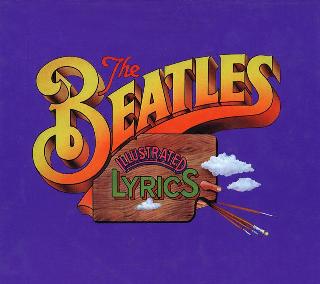Index
Home
Vorige
Don't Pass Me By
Composer(s) : Lennon and McCartney
Year :
Chords/Tabs: Don't Pass Me By
Notes on "Don't Pass Me By" (DPMB)
KEY C Major
METER 4/4
FORM Intro -> Verse -> Verse -> Refrain ->
Verse -> Refrain -> Interlude ->
Refrain -> Outro (w/ complete ending)
GENERAL POINTS OF INTEREST
Style and Form
- Perhaps the only thing that's more astonishing than Ringo's
officially releasing a song for the first time in 1968 is the
evidence that the song already existed, at least in part, four
or more years earlier.
- Seek out the BBC Radio first-ever "Top Gear" programme broadcast
on July 16, 1964 (where were *you* on that date?), where you can
listen to Ringo and Paul not just discussing the song with host Brian
Matthews, but even hear them singing a few sample bars. In that
context, you could imagine the song being delivered as a rocking
bluesy number, in the manner of "Can't Buy Me Love."
But wait
four years, slow down the tempo, add a part for fiddler, and voila:
we have it served up all countrified and back woodsy, as if it ever
could be any other way.
Melody and Harmony
- The harmonic vocabulary is limited to the blues trio of I, IV, V.
- The bluesy flat 3rd scale degree (Eb) shows up in the tune of both
verse and refrain; near the very end of the section, in both cases.
Arrangement
- The instrumental texture is quite thick (you might say "muddy"),
the result of many overdubs, and special processing effects. For a
Beatles track, it's conspicuously *UN*varied throughout.
- The obbligato part for country fiddle is an inspired effect and nicely
executed.
- Ringo's solo vocal part sounds auto-double-tracked throughout, as well
as artifically sped up. Seek out, BTW, the mono White Album where this
track is mastered a full half-step higher (and consequently runs faster)
than the stereo version.
- The track is bracketed at both ends by noodling; i.e. by a piano
on the way in, and by the fiddle on the way out. This is a novel
studio effect that falls somewhere on the spectrum between suggesting
a live performance and exploitation of the recorded album medium.
SECTION-BY-SECTION WALKTHROUGH
Intro
- The piano noodling of the intro is capped off by some attention
grabbing drum fills, and then followed by four measures of vamping
on the C Major, I, chord.
Verse
- The verse is unusually long and a prime-numbered 19 measures in
length.
|C |- |- |- |
C: I
|F |- |- |- |
IV
|G |- |- |- |
V
|F |- |- |C |- |- |- |
IV I
- I'd parse the lyric into four phrases, the final one of which is
both elongated and asymmetrical (7 measure length!) in a manner unusual
for our genre. The latter effect helpfully counteracts the otherwise
almost deadly, unvarying and slow-paced harmonic rhythm.
Refrain
- The refrain section is also an elongated paragraph, this time a
full 24 measures in length.
|C |- |- |- |
I
|F |- |- |- |
IV
|C |- |- |- ||(1 extra measure in final refrain!)
I
|G |- |- |- |
V
|F |- |- |- |
IV
|C |- |- |- |
I
- The music parses into 6 phrases even in length. The lyrics, though,
while they start off with two phrases that follow the music, switch
to some kind of free verse for the remainder of the section. The vocal
phrases become increasingly interjectory, thus providing continually
larger amounts of space between phrases for the obbligato part.
- The final refrain adds one odd measure at the end of the third phrase,
a gesture that resonates with the odd "missing measure" in the third
phrase of every verse.
Interlude
- Ringo counts in a stage whisper from 1 to 8 during the final four
measures of the penultimate refrain. Then the beat suddenly stops
for a few short seconds before drum fills, quite reminiscent of
the intro, remind us that we've got a few more miles to go.
- While the overall form of the track is pretty much standard, the
sequence of a double refrain at the end is unusual, and also risky in
terms of flirting with boredom; hence, I believe this pause serves
to grant some helpful breathing room between the two refrains. I
encourage you to ponder the compositional mystery of how effectively
such a gesture articulates form in spite of its brief duration and
seeming insignifigance.
- Check out the infamous Peter Sellers tape version of this track,
on which a reprise of the first verse appears in between the final
two refrains. You can clearly hear for yourself the boredom risk
inherent in THAT path.
Outro
- The instrumental outro grows directly out of the final refrain.
|F |- |G |- |I |- .....
IV V I6->5
4->3
- Some people will parse the harmonic content of measure 5 as though
it were a IV-I plagal cadence, but I urge you (as I always do when
we run into one of these) to hear the downbeat chord as simply a
double appogiatura to the I chord.
- That final chord is sustained the equivalent of at least four measures
but your mind stops keeping track of this as soon as the steady beat
ceases.
SOME FINAL THOUGHTS
- This song provides an object lesson on how an almost painfully simplistic
ditty can still be redeemed by virtue of an imaginative arrangement and
delivery.
- The fact that Ringo should opt for this in his first outing should not
surprise us. If you look at some of the evidence from the Get Back
sessions, you might conclude that this kind of thing is the limit of
what the poor lad is capable of. Check out the bootleg audio fragments
of "I Bought a Picasso" and "Taking A Trip to Carolina," as well as
a scene in the film where Ringo struggles in real time to hack out a
decent bridge section for
"Octapus's Garden" literally with help from
his friends.
- On the other hand, you might argue that Ringo's mates didn't do very
much to bring him along in the musical department. Review the list of
songs for which they assigned him the lead singer! Not just the covers,
but the L&M originals as well: whether it's
"I Wanna Be Your Man,"
"Yellow Submarine," or even the
ill-fated "If You've Got Trouble,"
you might start to think they had some subconcious desire to keep
him conditioned to a steady diet of simple strains. Who knows? If
you're Paul's grandfather, you might even say this was all part of
"their cruel unnatural treatment." Yes, I know that's ridiculous
hypothesis, but I have difficulty with self control when a movie
quote just seems to fit. :-)
Regards,
Alan (awp@world.std.com)
---
"I've written a good one, you see, but nobody
wants to record it." 020198#142
---
Copyright (c) 1998 by Alan W. Pollack
All Rights Reserved
This article may be reproduced, retransmitted, redistributed and
otherwise propagated at will, provided that this notice remains
intact and in place.
Ook op The Beatles [White Album]:
(c) 2024 Serge Girard


 (c) Alan Aldrigde, The Beatles Illustrated Lyrics
(c) Alan Aldrigde, The Beatles Illustrated Lyrics